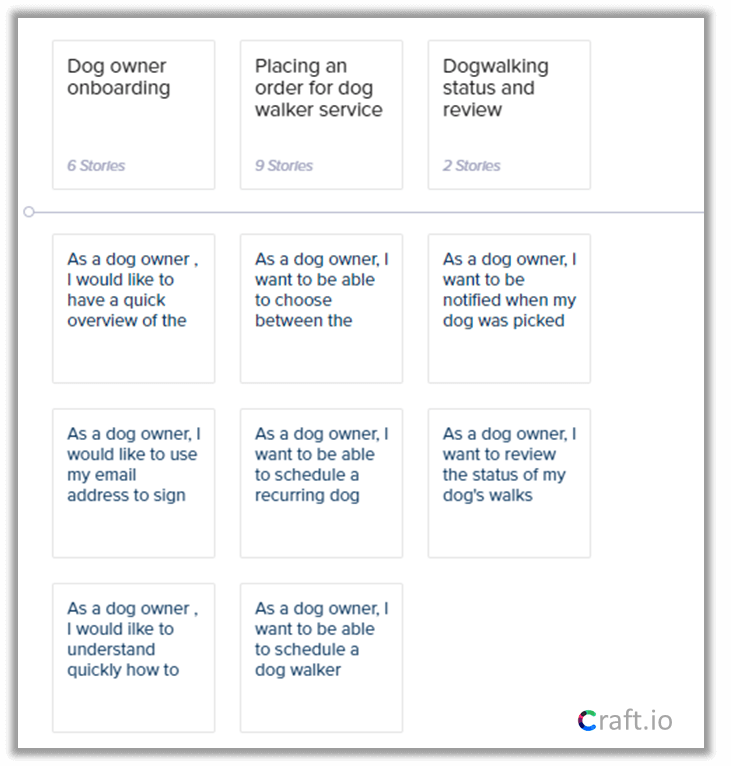Home > Blog > A Shortcut to Story Mapping in 3 Quick Steps
A Shortcut to Story Mapping in 3 Quick Steps

Here’s the thing about story mapping in the agile product management process: technically, it’s one of the easiest stages in the process. Essentially, discovery is the foundation of your product development. No other stage in agile product management is this simple and this important.
In its nature, discovery is an associative, free-rolling yet structured process. Every aspect of the agile storymapping methodology is finely tuned to maintain that delicate balance. Let’s start with the mechanics of mapping.
Epics – left to right
The most basic, affordable, low-tech technique of user story mapping is commonly done with stick-it notes on a board.
Start with the big, general ideas for features, and go from left to right. They’re known as Epics. When you’re done running with the storymap’s main line – only then move on to drilling down into each epic. The idea is to go on an uninterrupted associative journey where you can sprint from one pebble to the next without being sidetracked.
Jeff Patton calls this practice “flattening the flow”. Only then can we proceed to “rolling it up” – expanding each epic into stories.
Stories – top to bottom
Next, we drill down into each epic. This we do top to bottom, each story stemming from an epic in the main line. We repeat the associative run with ideas, only this time they are focused on the epic at the base of the story. The map helps us stay in check.
The visual aspect of storymapping is a critical ingredient. When we can see the way the map takes shape, its helps us organize our thoughts in the shape and direction the ideas are going.

Example of epics and stories in Craft’s story mapping module
Storytelling – the method
Like most good methodologies, the secret sauce is in the execution, in “the twist of the wrist”. Work in teams of two when storymapping. Find a quiet, out-of-the way space to work, where you won’t be interrupted.
Why teams of two? So that one of you (assumingly the product owner) can ideate while the other documents and writes up the story maps.
This is another check-and-balance micro-practice, that is meant to afford the idea-owner to run free with their ideas without being burdened by the need to stop and write.
DOWNLOAD FOR FREE this Agile user persona sample at Templates section at craft.io

